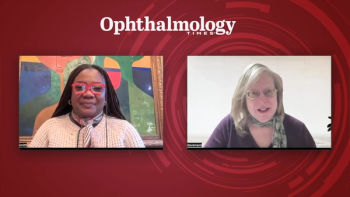
Corneal implants improve vision in patients with ectasia
Early experience with corneal implants (Intacs, Addition Technology) to treat corneal ectasia including keratoconus, pellucid marginal degeneration, and post-LASIK ectasia, seems promising, according to Audrey Talley-Rostov, MD.
Early experience with corneal implants (Intacs, Addition Technology) to treat corneal ectasia including keratoconus, pellucid marginal degeneration, and post-LASIK ectasia, seems promising, according to Audrey Talley-Rostov, MD.
Dr. Talley-Rostov reported results from a retrospective study of 35 patients. She used a steep-axis technique and placed symmetric segments in patients with keratoconus or post-LASIK ectasia, and she implanted asymmetric segments in patients with pellucid marginal degeneration. The thicker segments were implanted superiorly, she explained. Dr. Talley-Rostov is from Northwest Eye Surgeons, Seattle.
Follow-up ranged from 3 to 18 months. Results in all patients showed that the best-corrected visual acuity (BCVA) improved from one to seven lines (mean, 2.3 lines) in 22 eyes, 11 eyes had no change in BCVA, two eyes had a decreased of one to two lines of BCVA, three eyes lost BCVA because of progression of cataracts.
Intraoperative complications included one microperforation in a patient with keratoconus. Postoperative complications included dislocation of the corneal implants into the anterior chamber in one eye of a patient with keratoconus, extrusion of Intacs under a previous LASIK flap in one eye, and postoperative migration of Intacs necessitating repositioning in five eyes (two patients with pellucid marginal degeneration and three patients with keratoconus), according to Dr. Talley-Rostov.
"The use of Intacs is a promising technique for the treat of different corneal ectasia, including keratoconus, pellucid marginal degeneration, and post-LASIK ectasia. Although the sample size in this study was small, all groups had similar improvements in BCVA and overall tendency for reductions in astigmatism. There were complications, but none were vision-threatening," she concluded.
Newsletter
Don’t miss out—get Ophthalmology Times updates on the latest clinical advancements and expert interviews, straight to your inbox.





